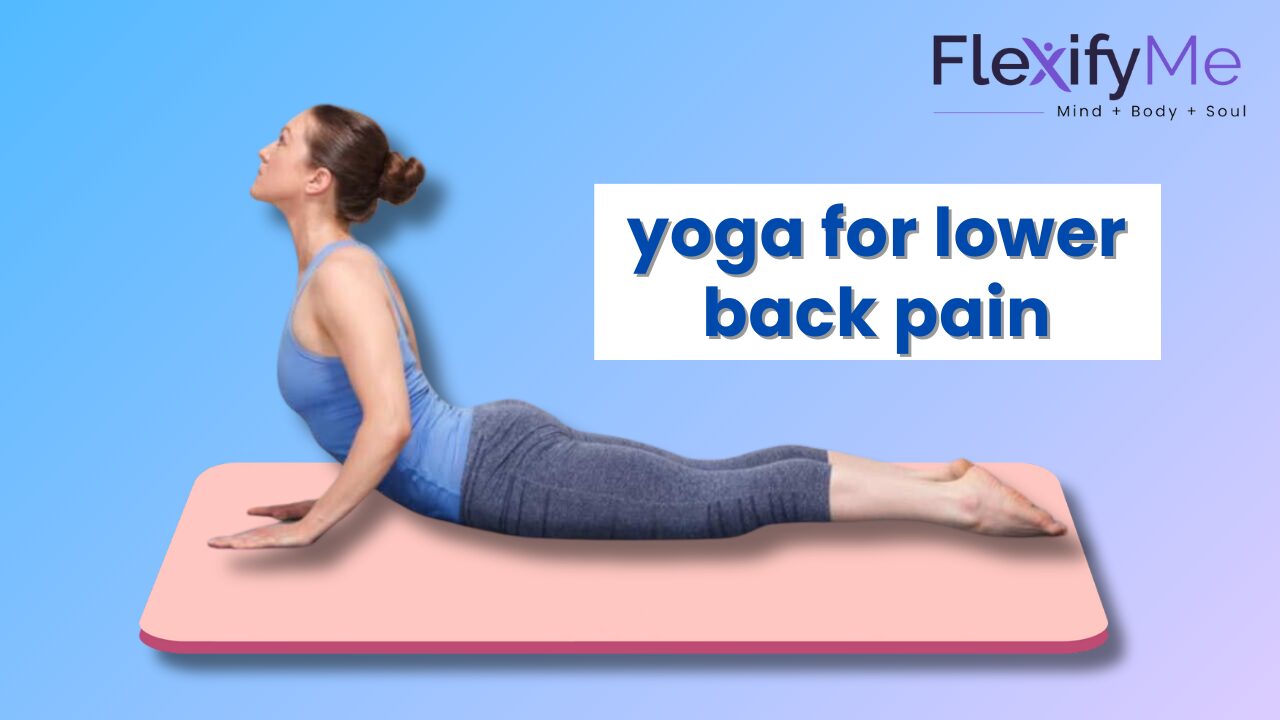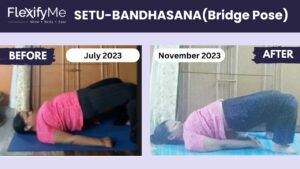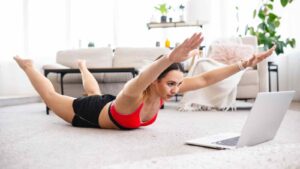Lower back pain is a common problem that is affecting millions of people across the globe. There could be many reasons for this lower back problem, like stress, wrong body posture, a sedentary lifestyle, and injuries. Though there are regular treatments, like medication or surgery, that provide relief, they do have side effects, and there are chances that pain may relapse after a while. So what could be the substitute?
Well, the answer is a balanced combination of yoga and physiotherapy. Studies suggest that yoga and physiotherapy complement each other so well that their combination could be effective in managing various health conditions such as chronic pain, joint problems, sore muscles, and mental health issues. Yoga and physiotherapy can go hand in hand, significantly benefiting lower back pain relief.
Yoga is our inherent heritage recognised worldwide for its numerous health benefits for lower back issues and the well-being of mind, body, and soul. On the other hand, physiotherapy is a physical treatment provided by a practitioner called a physiotherapist who will promote, maintain, and restore health, and this treatment is confined to the area of the injury. Here, we will see how yoga and physiotherapy benefit in this condition.
Benefits of Yoga for Lower Back Pain

Yoga is a classic practice that helps the body maintain strength and flexibility. It is a comprehensive approach towards relieving the back ache. Involving a sequence of postures and breathing techniques, yoga helps to reduce muscle tension, increase body strength, and improve balance and bone strength. Before diving into yoga poses, let’s glance at how yoga offers lower back pain relief.
Improves flexibility
Yoga poses or asanas are delicately designed to stretch the muscles and the spine, alleviating muscular tension and providing elasticity, which can help you move better by relieving stiffness. Studies highlight that just 8 weeks of regular yoga practice has improved flexibility among people.
Strengthens core muscles
Many yoga poses work with muscle groups, strengthening the core muscles and providing support and firmness to the lower back. Apart from lower back pain, it builds the core muscles, which helps increase stability and muscle tone.
Improve body posture
Most of the time, muscle soreness is due to wrong body posture, but when you have stronger core muscles, it automatically enhances your body posture, helping in lower back pain management.
Improves blood flow
Yoga exercises often tend to increase blood flow around the areas of the spine and surrounding muscles, allowing more oxygen to reach cells and enhancing their functions, resulting in pain relief and muscle relaxation, promoting healing.
Stress reduction
Stress is one of the preeminent reasons for any pain to elevate. Practising yoga regularly unquestionably manages stress, anxiety, and depression, promoting muscle relaxation and causing lower back pain prevention.
Yoga Poses for Lower Back Pain
Yoga is not just about doing some stretches; it is about performing asanas gently and consciously for a few minutes to help you have a clear awareness of your body. If practised mindfully, you can experience an overall decline in pain. It acts as a tool in lower back pain treatment. The best part is that it can be performed by any age group, allowing you to take it up at any time in your life. Here are a few poses or asanas that can help cure lower back pain:
Balasan or Child Pose
This yoga for lower back pain may be the easiest pose in yoga apart from shavasana, balasana, or child pose stretches your lower back and eases the pain. Sitting on your heel, stretch your arms out in front, place your arms on the floor, relax your head on the ground, and take deep breaths. Do not bend yourself forcibly.
Chakravakasana or Cat-cow Pose
Chakravakasana, or cat-cow pose, helps relieve the rigidity in the upper back, lower back, and hip region and promotes mobility. Position yourself on your hands and knees, gently arch, and round up your back, slowly matching the inhaling and exhaling movements.
Bhujangasana or Cobra pose
Another simple pose, bhujangasana or cobra, engages your abs, strengthens the back muscles, improves your spinal pliability, and helps in lower back pain prevention. Lying on your stomach, lift your chest off the ground, head facing the ceiling, inhale as you lift your body, and exhale as you release back to the floor. Again, don’t force your back to bend out of its comfort zone.
Uttanasana or Standing forward fold pose
Uttanasana, or standing forward fold pose, often practised as a warm-up series, is a calming posture that straightens the hamstring, calves, and hips, relieving the tension in the spine. Here, you lean forward from the hips, elongating the spine, breathing in and out as you lean and straighten up.
Adho Mukh Svanasana, or Downward-facing Dog pose
Adhomukh svanasana, or downward-facing dog pose, works to improve body flexibility and soothe the spine. Lift your hips upwards, forming an inverted V. This stretches the entire back and relaxes your muscles.
Setu Bandhasana or Bridge Pose
Setu bandhasana, or bridge, is a dynamic pose that helps correct posture and alleviate lower back pain. This asana also stimulates the nervous system and boosts energy levels. Lying on your back, lift your hips, bend your knees, and form a bridge-like shape, breathing in and out. Remember not to strain your body.
The Role of Physiotherapy
Physiotherapy is one of the first-line treatments, defined as a science that helps improve dysfunctional movement. There are two types of therapies: active, which comprises stretching and strengthening exercises, and passive, which includes ice/heat packs, ultrasound, and others. Physiotherapy for lower back pain includes guided therapeutic exercises that build up the lower back muscles, conditioning the joints and spinal tissues. It also focuses on restoring the functions and movements of affected individuals. The physiotherapist uses different techniques and methods to address pain.
Manual therapy

Manual therapy comprises hands-on techniques like massage, neural mobilisation, joint mobilisation, METs (muscle energy techniques), soft tissue mobilisation, and manipulation that help pain reduction and reinstate function, promoting overall well-being.
Exercise prescription

Exercise prescription involves systematically designing and implementing therapeutic exercises tailored to the health requirements of the individuals undergoing rehabilitation. This can be one of the easiest ways to relieve lower back pain through physiotherapy exercises, as this can be done remotely with the help of qualified professionals.
Boot a free consultation with Flexify Me and get a free consultation.
Modalities
Modalities are a sequence of therapies and techniques that are more than just exercise and prescription, they include practices like:
Thermotherapy
Thermotherapy uses heat packs, warm towels, or paraffin wax baths to increase blood flow to ease the pain. This physiotherapy benefits by reducing the stiffness in the muscles and relaxing the tissues before an exercise or manual therapy.
Cryotherapy
While thermotherapy includes using heat, cryotherapy uses ice packs, cold baths, and cryotherapy chambers to help decrease inflammation and numbness. This therapy is generally used in injuries to control swelling.
Hydrotherapy
As the name suggests, hydrotherapy involves exercises that can be done with the help of water, like underwater treadmills and whirlpools, according to the ability of the patient to float and resist, aiding the movement and improving the blood flow.
Mechanical modalities
Mechanical modalities incorporate therapies like compression therapy, traction, and therapeutic massage devices involving mechanical exercises like pushing or pulling to encourage blood circulation and pain reduction. This therapy could be specifically beneficial for muscle rigidity or contraction in the spine.
Light therapy
Light therapy is a light-based modality that, along with laser therapy and phototherapy, uses a specific frequency of light that helps in tissue repair and pain relief. These therapies are used in soft tissue injury, conditions like arthritis and osteoporosis, or managing wounds, as these can encourage healing.
Electrotherapy
Electrical modalities include practices such as TENS (transcutaneous electrical nerve stimulation), EMS (electric muscle stimulation), and ultrasound therapy, which involves using sound waves or electric currents to modulate the pain and heal tissues to help improve muscular functions. These modalities are used in conditions like nerve pains or joint injuries.
Biofeedback
Biofeedback modalities are units like EMG (electromyography) and pressure biofeedback units. They give run-time feedback on muscle movements or activity. These techniques help improve movement control, correct body posture, and muscle activation, resulting in more effective results.
Overall, modalities are the combination of exercise and manual therapy to speed up the recovery process. Each modality has different properties and applications, and their selection depends on the individual needs, clinical tests, and therapist’s expertise.
Book a therapeutic session with FlexifyMe and manage your back pain in no time!
Functional Rehabilitation
Functional rehabilitation is designed to assist the patient in performing daily activities like walking or simple household chores like cleaning or housekeeping, helping an individual return to their daily routine.
Conclusion
Yoga and physiotherapy are two dynamic entities that can work wonders for human health. Regardless of whether you are recovering from an injury or grappling with chronic pain, consider incorporating yoga and physiotherapy. The main aim of this practice is to enable individuals to participate in their desired activity without any stress or pain and enjoy their life to the fullest. But remember, always consult a qualified healthcare professional or a yoga instructor for a safe and successful journey toward a happy and pain-free life.


